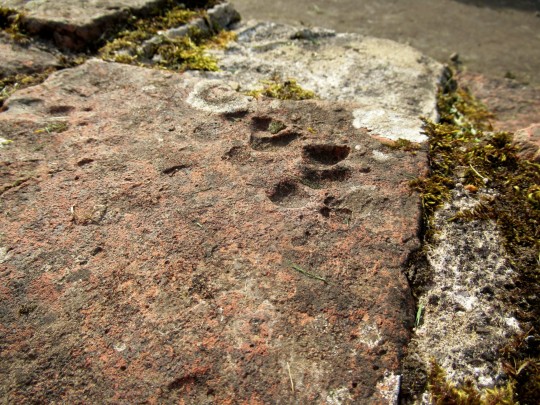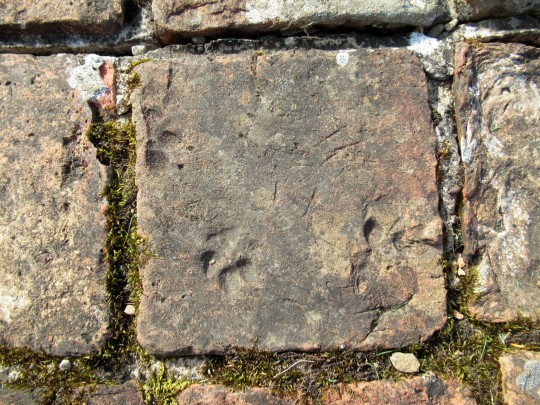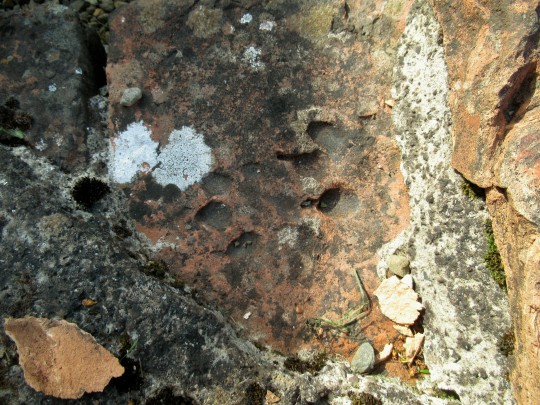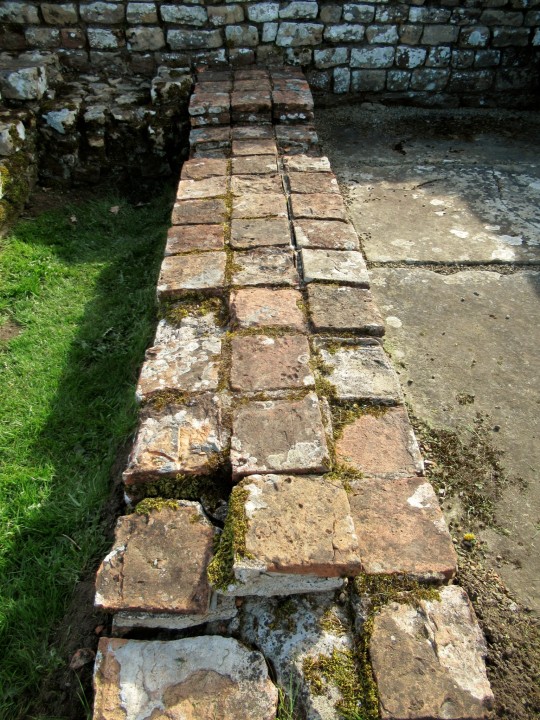#Cilurnum is a Roman cavalry fort built near Hadrian's Wall
Text






Another highlight from the Hadrian's Wall adventure -- we stopped to enjoy Cilurnum/Chesters Roman fort and spotted the feet of ancient dogs recorded for posterity. They're in terra cotta tiles that were used to build a kind of makeshift bathhouse in the dying days of the fort, after getting to the original bathhouse became too dangerous for reasons that are unclear (according to our guide). Look at all those tiles propping up that shambly hypocaust! We'll never know how many dog toes are lost to history in those stacks.
#Cilurnum#Cilurnum is a Roman cavalry fort built near Hadrian's Wall#near the time the wall was built so sometime in the late 120s AD#the tour is something I would normally skip#BUT#since it was late on a Tuesday afternoon in the off season there was virtually no one at the site and#as a result we had the tour all to ourselves & it was fantastic#just like my beloved National Musuem tours#<3 a private historical tour
18 notes
·
View notes
Text
October 19, 2015 - Roman Fort and Hadrian's Wall, Chesters, Northumberland, England
We visited one of the Roman forts along the Hadrian’s Wall in Chesters, Northumberland, England. This fort also known as Cilurnum or Cilurvum was a fort on Hadrian's Wall mentioned in the Notitia Dignitatum. It is now identified with the fort found at Chesters (also known as Walwick Chesters to distinguish it from other sites named Chesters in the vicinity) near the village of Walwick. It was built in 123 AD, just after the wall's completion. Cilurnum is considered to be the best-preserved Roman cavalry fort along Hadrian's Wall. The site is now preserved by English Heritage as Chesters Roman Fort.
Cilurnum was a cavalry fort at its foundation, for retaliatory raids into barbarian areas north of the wall, then given over to infantry later. Hadrian himself encouraged the "Cult of Disciplina" among legions stationed at the wall, and an early inscription on an altar dedicated to Disciplina, found in 1978, indicates the earliest known military presence was a wing of cavalry, ala Augusta ob virtutem appellata ("named Augusta because of its valour").
https://en.wikipedia.org/wiki/Cilurnum
All the Roman walls are World Heritage sites, but are in private lands. Between 122 - 125 AD, Roman Emperor Hadrian built a wall (117.5 km - 73.0 miles long) across Northern England from Solway to Tynemouth to stop the "Barbarians" (Scots) coming down south. He also built forts, one every five miles, to monitor the border. Remains of many forts and several miles of those walls still exist.
































Bust of Hadrian by Michelangelo di Lodovico Buonarroti Simoni

We walked through many pastures to see the wall. The cows and sheep gave us a funny look, as if asking, "Who are you? What are you doing here?".


We saw the wall in few other places too.






The Hadrian walls are 6-8 feet thick. In its heyday, they stood 8-10 feet tall. Local people have removed the stones to build their houses and nowhere the wall is seen with its original height. I do not know what kind of mortar they used; the stones are still held strong.
My longtime wish to see the Hadrian Wall came true today and I have seen the Hadrian Wall. One more thing down from my bucket list. Praise be to God.
0 notes